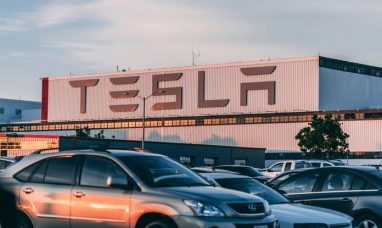The spotlight is on Nvidia China chip talks as CEO Jensen Huang confirmed the company is in dialogue with the Trump administration regarding a potential new semiconductor for China. Speaking during a visit to Taiwan, Huang discussed the possible “B30A” chip designed for AI data centers in China. While the decision to greenlight sales remains with U.S. regulators, Huang emphasized ongoing discussions are still at an early stage.
The proposed chip, based on Nvidia’s Blackwell architecture, would reportedly operate at about half the speed of its flagship B300. Due to U.S. national security restrictions, Nvidia’s top-tier GPUs cannot be sold to China, making the B30A an attempt to navigate export rules while maintaining market access.
U.S. and China Trade Dynamics
The Nvidia China chip talks come against a backdrop of shifting trade relations. After a temporary suspension earlier this year, the Trump administration approved sales of Nvidia’s H20 chips to China under a new 15% U.S. sales tax. Advanced Micro Devices (NASDAQ:AMD) received similar conditions for its MI380 chips sold to China. These developments reflect a cautious loosening of tech trade restrictions, with Washington and Beijing also agreeing to ease other curbs on items like chip design software and rare earth exports.
Unconfirmed reports suggest U.S. Commerce Secretary Howard Lutnick’s comments—stating that China only receives “fourth-best” chips—caused some friction with Beijing. Nevertheless, Nvidia continues to work closely with both governments to maintain sales while ensuring compliance with U.S. export controls.
Huang Is Addressing Security Concerns
As part of the Nvidia China chip talks, Huang addressed accusations from the Cyberspace Administration of China, which cited alleged “serious security issues” with Nvidia chips, including supposed tracking and remote shutdown capabilities. Huang firmly denied the existence of any “security backdoors” in Nvidia products and stated the company is providing documentation to Beijing to reassure authorities of their safety.
“We have made very clear and put to rest that H20 has no security backdoors,” Huang said, expressing surprise over the accusations. Nvidia hopes its transparency will satisfy Chinese regulators and prevent disruptions to its AI chip business in the region.
Nvidia’s Strategic Position in Global AI
The Nvidia China chip talks highlight the company’s critical role in the global AI ecosystem. Graphics processing units (GPUs) like Nvidia’s are essential for powering data centers and developing advanced AI systems. Despite U.S.-China geopolitical tensions, China remains a major market for AI hardware, and Nvidia is eager to sustain its presence without compromising national security.
Taiwan Semiconductor Manufacturing Co. (NYSE:TSM), Nvidia’s key manufacturing partner, also plays a pivotal role in this strategy. As the world’s largest contract chipmaker, TSMC’s advanced production capabilities enable Nvidia to deliver competitive products even under export restrictions.
What’s Next for Nvidia and AI Chips?
The outcome of the Nvidia China chip talks will shape not only Nvidia’s future revenues but also broader U.S.-China tech relations. If the B30A or similar chips gain approval, it could signal a pragmatic approach where both nations find middle ground. However, continued security scrutiny and political rhetoric pose ongoing risks.
China’s leadership has made semiconductor self-reliance a strategic priority, yet its industries still depend on U.S. know-how for advanced chips. Nvidia’s ability to navigate these political and regulatory challenges will be key to its long-term global AI leadership.
Ultimately, investors and industry analysts will be watching closely as these negotiations unfold. The outcome could influence global semiconductor supply chains, shape future trade policies, and determine how AI technology is shared internationally. How Nvidia balances innovation, compliance, and diplomacy may set the tone for the next decade of U.S.-China tech relations.
Featured Image – Megapixl








